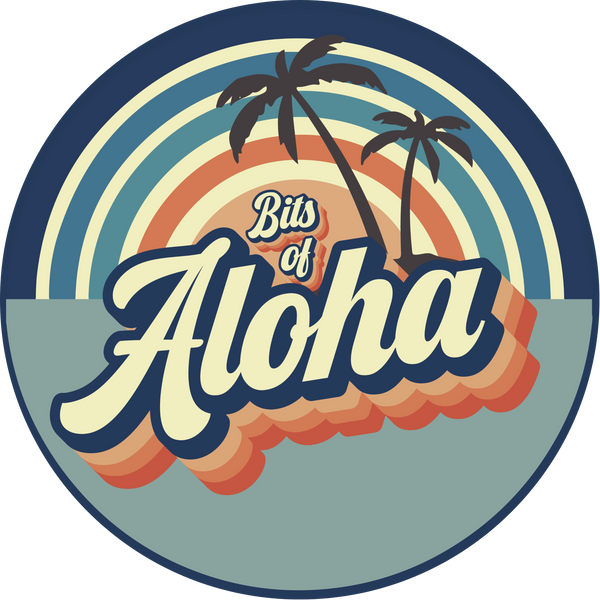
Tariffs & Tourism: Impact on Hawaiʻi's 2025 Economy
Share
How Tariffs Are Reshaping Hawaiʻi’s Economy and Tourism in 2025
In 2025, Hawaiʻi faces a growing economic challenge: the ripple effects of U.S. tariffs on the islands’ already delicate economy. Comprised largely of imported goods and heavily dependent on tourism, Hawaiʻi is especially sensitive to rising trade costs and fluctuations in global travel patterns. New or increased tariffs are pushing prices higher, affecting local businesses and residents, while tourism—though gradually rebounding—is showing signs of strain amid heightened costs and political tensions. Here’s a closer look at how these tariff measures are reshaping the economy of Hawaiʻi and Honolulu.
Rising Prices Across the Board
Hawaiʻi imports the vast majority of its goods, from food and clothing to durable manufacturing materials and packaging. Recent tariffs—ranging from 10% to 50% on imports from over 60 countries and the European Union—have intensified price pressures. https://www.hawaiinewsnow.com
According to a survey by the Chamber of Commerce Hawaiʻi, nearly 70% of local businesses report significant impact from these tariffs. A general manager in Kalihi noted a 15% increase in the cost of clear polypropylene bags, with glass bottles and other packaging items also facing steep price hikes.
The most immediate consequences are visible in grocery and retail inflation. In Honolulu, the Consumer Price Index rose to about 2.7% in May, notably higher than the national average of 2.4%. Food prices in particular rose nearly 6%, and clothing costs jumped over 8%, with economists pointing to tariffs as a key fuel for these spikes.
Tourism Facing Turbulence
Tourism remains Hawaiʻi's economic backbone, but tariff policies have started to influence traveler behavior. Canadian visitor numbers, for example, have dropped—from accounting for around 7% of arrivals to just 4% in recent months—partially due to trade tensions, including tariffs on Canadian goods. Chamber of Commerce Hawaii
The Hawaiʻi Hotel Alliance is reporting fewer reservations this summer, a traditionally peak travel season, despite no major weather disasters influencing bookings at the time. Chamber of Commerce Hawaii
Another blow comes from the federal sector: government-associated travel to Hawaiʻi has dropped by about 50%, possibly linked to policy shifts and budget cuts under the current administration, further weakening hotel occupancy and related spending. Honolulu Civil Beat
Economic Forecast Adjusted Down
The Department of Business, Economic Development & Tourism (DBEDT) has recalibrated its 2025 growth projections, lowering the estimate from 1.7% to just 1.2%, citing tariffs, tourism cooling, and persistent inflation as factors. DBEDT
Statewide, industries such as construction, real estate, healthcare, and professional services may absorb some shocks, but their growth potential is uncertain amid rising costs and supply-chain concerns—especially in the face of rebuilding efforts like those in Lahaina and other areas.
Honolulu Inflation Among the Nation’s Highest
Honolulu's inflation ranking—6th worst out of 23 metros tracked by WalletHub—reflects the high cost of living and business operations. Honolulu Civil Beat
Even as inflation ticks downward slightly from the double-digit rates seen earlier in the year, the impact remains very real. Groceries and clothing costs remain steady burdens for households, while businesses face crippling input price increases that could translate into lower margins or higher prices for consumers.
Small Businesses Feeling the Pinch
Hawaiʻi’s vast network of small, family-owned businesses—from boutique retailers to local artisans and eateries—find themselves disproportionately impacted by tariffs. Without the scale to absorb higher input costs, many must raise prices or reduce inventory, while financial planning becomes increasingly uncertain.
A local home-goods designer shared that manufacturing costs for items like wool rugs and duvet covers have skyrocketed because raw materials now face steep duties—material sourced globally often carries tariffs as high as 50%. https://www.hawaiinewsnow.com
Tourism Demand Shows Resiliency... Up to a Point
Despite tariff-driven cost pressures, tourism spending remains robust overall. Names like “someone will always pay” reflect a shift in strategy: fewer visitors may come, but those who do spend more per trip.
However, reliance on the highest-spending guests creates vulnerabilities. Economic or geopolitical destabilization—like tariffs targeting allied countries or strained relations with Canada and Japan—could erode campaign investments and arrivals over time.
Wider Implications for Hawaii’s Future
Tariff pressures reveal long-standing structural vulnerabilities in Hawaiʻi’s economy. Heavy reliance on imports and tourism makes the state especially vulnerable to external shocks.
Several local voices and stakeholders call for economic diversification. Proposals include expanding agriculture, aquaculture, technology, creative industries, and renewable energy. Yet progress remains slow, and current structures still hinge on visitor dollars and volatile supply chains.
Bottom Line: Tariffs Are Real, Impacts Are Multiplying
- Goods costs are rising: price hikes are hitting consumers, small businesses, and retailers alike.
- Tourism is fragile: visitor counts dipped—with Canadians pulling back, and government-related travel slumping.
- Growth projections trimmed: 2025 growth now forecast at only 1.2%.
- Inflation in Honolulu remains among the nation’s highest, driven by food, clothing, and imported goods.
- Business uncertainty is widespread: planning is harder; margins are thinner; survival hinges on flexibility and creativity.
What Hawaiʻi Can Do
- Support local producers. Buying Hawaiʻi-made foods, crafts, and materials helps buffer against imported cost shocks.
- Strengthen sustainable tourism. Focus on higher-value, lower-impact visitors and experiences that invest directly in communities.
- Advocate for small business relief. State and federal policies (like exempting small businesses from certain tariffs) could provide much-needed breaks. https://www.hawaiinewsnow.com
- Push economic diversification. Renew community investments in agriculture, renewable energy, tech, and creative sectors that reduce import and tourism dependencies.
Tariffs are more than policy lines—they’re price tags on kitchen tables, shelves, and hotel invoices across Hawaiʻi. As 2025 unfolds, the islands’ resilience will be tested not just by the ocean but by the global marketplace. Smart policy, local support, and strategic adaptation can still steer the state toward sustainable, balanced growth.
